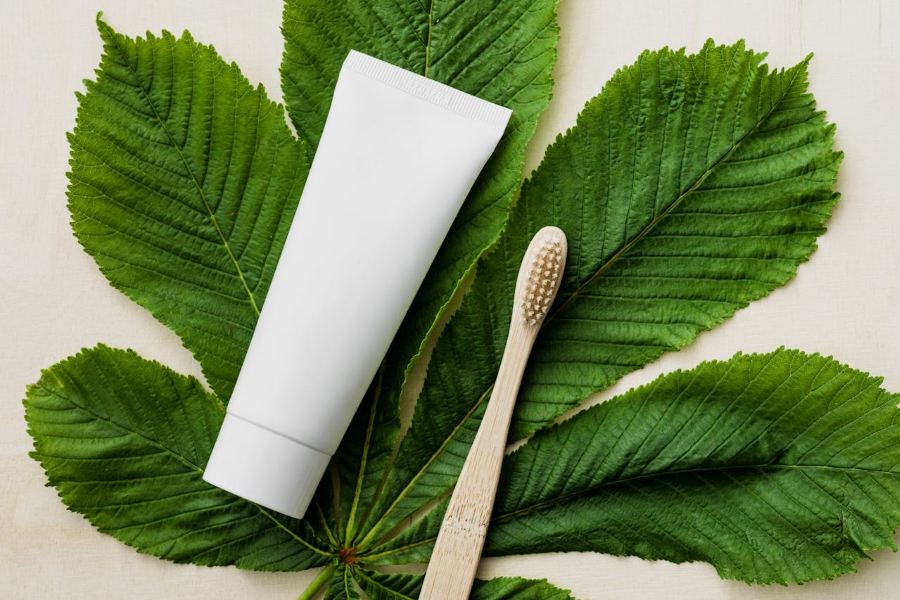Every digital marketing campaign has different goals. Some campaigns focus on driving traffic, while others aim at building brand awareness. But when we really look into it, conversions are the ultimate metric. Conversions can mean anything from signing up for a newsletter and filling out a contact form to buying a product. Mastering the art of reaching people who are actually interested in converting is something altogether different, and this is where bottom-of-the-funnel keywords come into play.
Bottom-of-funnel keywords are the key to driving intent-driven traffic, targeting individuals who are ready to make a purchasing decision. Unlike top-of-funnel and middle-of-funnel keywords, which attract and nurture leads, bottom-of-funnel keywords aim to close the deal.
Let’s dive into the nuances of bottom-of-the-funnel keywords, offer insights on how to identify and implement them, and give you some measures of the effectiveness of these powerful keywords to boost your bottom line.
What are bottom-of-funnel (BOFU) keywords?
Bottom-of-the-funnel keywords are search terms that potential customers look for when they are close to making a purchasing decision. These terms often have a high level of intent and specificity that indicates the searcher is ready to convert. Bottom-of-the-funnel terms include phrases like “buy,” “price,” and “near me” and product-specific searches that include specific models or brand/product names.

Bottom-of-the-funnel keywords and the buyer’s journey
The buyer’s journey has taken many metaphorical shapes, but a funnel is the most popular iteration. The journey typically begins with awareness (top-of-funnel). This is where you find the largest audience sizes. People here are just looking for possible ideas. The group then moves through the consideration phase (middle-of-funnel), where they’re doing more targeted research and looking at reviews to weigh their options. Finally, the decision stage (bottom of the funnel). At this final stage, the searcher wants specific information to make a purchase, such as purchase locations and pricing.
Targeting these keywords helps businesses target potential customers who are ready to buy, increasing the likelihood of conversion and driving strong ROI.
Top vs. middle vs. bottom-funnel keyword examples
The best way to demonstrate the significance of bottom-of-the-funnel keywords is to distinguish them from top-of-funnel and middle-of-funnel keywords.
- Top-of-funnel keywords
Broad and informational, they are used by individuals who are in the early stages of their research and make a great starting point for general blog topics. Examples include “best home workout routines” or “how to improve SEO.”
- Middle-of-funnel keywords
These keywords are more specific and reflect a deeper engagement level where searchers compare options and consider solutions. Examples include “home gym equipment reviews” or “SEO tools comparison.”
- Bottom-of-funnel keywords
These are highly specific and indicate a high intent to purchase/convert. Examples include “buy home gym equipment online,” “best price for SEO tool X,” or “near me.”
Understanding these differences is key to effectively targeting potential customers at various stages of their journey with various pages on your website. However, by focusing on bottom-of-the-funnel keywords, you can directly address the needs of those who are ready to convert, driving higher sales and increasing your return on investment.
How to pick bottom-of-the-funnel keywords
Selecting the right bottom-of-funnel keywords is essential for targeting potential customers who are ready to make a purchasing decision. Here are some strategies and key keyword modifiers to help you identify and leverage these high-intent search terms effectively:
- Competitor analysis: You always want to look at your competitors to find effective bottom-of-funnel keywords. Tools like Ahrefs and SEMrush give insights into keywords driving traffic to your competitors’ sites. By knowing what works for them, you can use similar keywords that can work for you.
- Customer feedback: Existing customers are a goldmine of information. You can always survey customers or collect feedback to help find the exact terms and phrases they used when ready to purchase.
- Pay attention to reviews, testimonials, and customer service interactions to identify keywords or terms that sparked them to take action.
- Keyword research tools: Keyword research tools like SEMrush Keyword Magic Tool, Google Keyword Planner, and Moz can help your team identify bottom-of-funnel keywords. These terms will often have lower search volumes, but offset by their high intent, look for a good balance of ranking difficulty to find those sweet spots that can drive conversions.
Examples of bottom-of-funnel keyword modifiers:
- Pricing:
- Cheap [keyword]: Example – “Cheap business cards”
- [brand] pricing: Example – “VR training pricing.”
- Product Types:
- [keyword] for [use case]: Example – “Catering services for a work party.”
- Top [keyword] for [category]: Example – “Top office chairs for small businesses”
- Comparison:
- [brand] vs [brand]: Example – “Square vs PayPal”
- [brand] alternatives: Example – “QuickBooks alternatives.”
- Reviews:
- [keyword/brand] review: Example – “Local bakery review”
- [brand] ratings: Example – “ABC Plumber ratings”
- Buying Process:
- Best [keyword]: Example – “Best SEO company”
- Top [keyword] near me: Example – “Top plumbers near me.”
- Brand & Product Names:
- [brand specific product]: Example – “Dell Inspiron laptop”
- [brand product] under [price]: Example – “Office chairs under $100.”
Using these strategies and knowing which keyword modifiers to look for can help you effectively target high-intent searches. The next step is optimizing your content to resonate with users who are ready to make a purchasing decision.
Optimizing for bottom-of-the-funnel keywords
Now that you have your bundle of target keywords, it’s time to optimize your content and begin climbing the ranks. Here are some tips for integrating bottom-of-funnel keywords into the different pages of your website.
Blog posts:
Blogs are often top-of-the-funnel content, but creating blog posts that target bottom-of-funnel keywords can be incredibly beneficial. Concentrate on developing material that answers potential purchasers’ specific questions and wants. For example, a blog article titled “Top 5 Tips for Choosing the Best Home Gym Equipment” can use keywords such as “best home gym equipment” to provide extensive comparisons and recommendations.
Write text that connects with your audience and motivates them to act. Highlight your product or service’s unique selling advantages and respond to any potential concerns. As voice search becomes increasingly common, improve your content for voice queries by utilizing natural language and addressing questions directly. This can help collect bottom-of-funnel searches from people who prefer to use voice assistants.
Product pages:
Product pages are ideal for targeting bottom-of-funnel keywords. Ensure these pages are optimized with clear, concise descriptions containing relevant keywords. Highlight the features, benefits, and customer reviews. For example, a project management tool’s product page could include keywords like “buy project management software” and “project management software free trial.”
Be sure to highlight testimonials, reviews, and case studies to increase trust and credibility. Providing real-life examples of delighted customers helps comfort potential buyers and increase conversions.
Finally, incentives like discounts, free trials, or limited-time offers might encourage potential customers to take action. These deals should be clearly communicated and easy for users to use. Once you have their information, your team has a higher chance of closing the deal with follow-up marketing and correspondence.
Landing pages:
Campaign or promotion landing pages should be optimized for bottom-of-funnel keywords to boost conversions. Use captivating headlines, persuasive language, and strong call-to-actions. Include user testimonials, reviews, and case studies to build trust with your audience. For example, on a landing page offering a free trial, include phrases like “start free trial [product/service].”
Best practices for on-page SEO with bottom-of-the-funnel keywords
Similar to any on-page optimizations, there are some best practices to keep in mind.
- Keyword placement:
Be strategic with your placement of bottom-of-the-funnel keywords throughout your content. Avoid keyword stuffing at all costs, but if possible, include them in the page title, headers, meta descriptions, and the first 100-150 words of copy. Keyword usage should flow naturally and not disrupt the readability of your content.
- Content relevance:
Ensure that the content on your pages directly addresses the intent behind a user’s search. Make sure to offer comprehensive information, answer common questions, and solutions that align with the keywords. For example, if targeting “best price for SEO tool,” include detailed pricing information, comparisons, and why that price is best.
- User experience:
While not directly relevant to optimizing for keywords, a superior user experience is paramount to finalizing conversions. Make your website fast, mobile-friendly, and easy to navigate—a seamless user experience reduces roadblocks and makes it easier for users to reach the conversion you’re steering them toward.
Measuring the success of your BOFU keyword strategy
All SEO projects need to report on performance. It doesn’t matter if it’s a striking distance play or a top-to-bottom technical clean-up; you need to know how your efforts are performing in order to track ROI, adjust, and re-adjust. These are some metrics to track:
Conversion rate: The conversion rate is the most important metric to consider when judging the success of your bottom-of-the-funnel keyword optimizations. This metric counts the number of people who perform your desired conversion, like buying something or sending a contact form. Tracking conversion rate lets you figure out which terms drive the most conversions, adjust your strategy, or celebrate your success.
Engaged sessions: Keeping an eye on engaged sessions can help you figure out how well your content is getting and keeping users’ attention. High counts of engaged sessions indicate that visitors are interacting with your content, which keeps people on your site, and leads can lead to higher conversion rates.
Average order value (AOV): Tracking the average order value (AOV) can provide insights into the financial impact of your efforts. Keywords that drive higher-value purchases are particularly valuable as they contribute more significantly to your bottom line and indicate that you could be tapping into that high-intent customer base you were aiming for.
Click-through rates (CTR): The click-through rate measures the percent ratio of searchers who click on your link after seeing it in the SERPs. A strong CTR indicates that your meta descriptions and titles effectively attract clicks because they communicate value propositions and encourage users to click through to your site.
We recommend tracking tools like Google Analytics, Google Search Console, and Microsoft Clarity to track these key metrics consistently. Then, using the insights gained from those tools and making data-driven adjustments, you can maximize your conversion rates and achieve sustained business growth. This proactive approach ensures that your SEO efforts remain effective and relevant.
Conclusion
Mastering the use of bottom-of-the-funnel keywords is essential for raising conversion potential by driving intent-driven traffic to your website. Hopefully, we helped you understand the role these keywords play in the buyer’s journey and motivated you to identify high-value terms, strategically integrate them into relevant pages, and drive significant business growth. Now is the time to dig deep and make some bottom-of-funnel keywords work for you. If you have any questions or need further guidance, feel free to reach out – Redefine specializes in SEO and content optimization so we’re familiar with keywords on all levels of the sales funnel.




